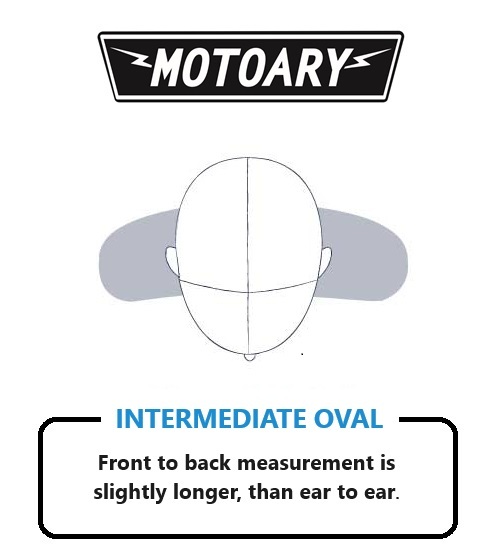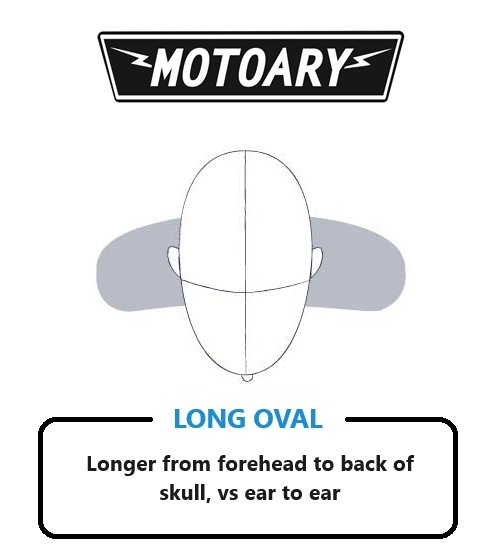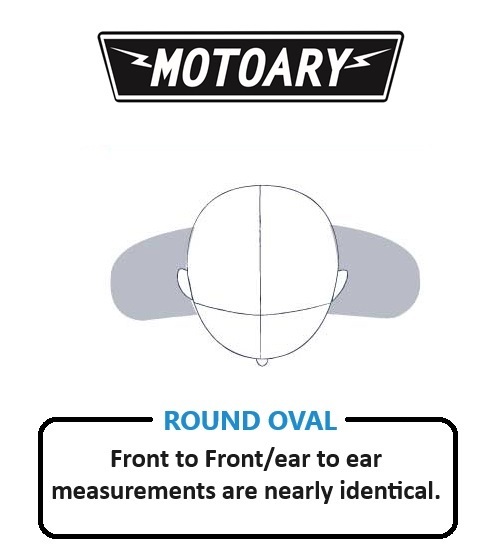Motorcycle Helmet Fitment Guide
Feb 1st 2014
Motorcycle Helmet Fitment & Sizing Guide
There's no denying your enjoyment and safety on a motorcycle boils down to how safe you are. An industry saying goes "dress for the slide not the ride!" But what does this really mean? and why does it matter? Helmet safety is more than just the safety sticker on the back of the helmet. Helmet safety is a combination of the right shape, the right size, and the right style for the riding you are planning to do. Over half of riders on the road currently, are in a helmet one size to big. No matter what safety features or standards your helmet is manufactured to, a helmet too big will mitigate some if not all of those features.
The Right Head Shape
The first step in achieving the perfect helmet fitment, is understanding your head shape. There are three head shapes when considering your new helmet: intermediate oval, long oval, and round oval.
Intermediate Oval
Intermediate Oval is the most common head shape. In the industry, this shape is all known as “egg head”, because the rear portion of your skull is slightly larger than the front portion. Most helmets on the market place are designed for intermediate oval head shapes.

Long Oval
Long Oval is the most uncommon head shape out of the three listed. A long oval head has a longer front to back measurement, while having a much smaller ear to ear measurement. This head shape is synonymous with users having hot spots (a red pressure spot that becomes sore to the touch and may even create migraines) that develop on the forehead which is a sign the helmet is to small from front to back of the skull.

Round Oval
Round Oval head shapes have a measurement that’s similar, if not very close in measure from front to back and from ear to ear. This head shape is more common in Asian backgrounds, which is why companies like Arai Helmets only produce round oval shell shapes in Asian markets.

Measuring
The next step in fitment is measuring your head. This is a key step and requires the use of a cloth or flexible tape measure that reads in centimeters (CM). The reason we measure helmets in centimeters is because there are more cm’s in a given length than inches – meaning you’re measuring for a tighter more precise fitment. For example: HJC Helmets size Medium measure between 57 – 58 cm, while a size Large measures between 59-60 cm. The difference between sizes is close to half an inch difference. It is important to always measure in centimeters, and to never convert inches to centimeters because of the difference in measurements.
To accurately measure your head, use the tape measure to go around the circumference of your head keeping the tape measure of the widest portion of your skull and 1” above your eyebrows. This measurement in centimeters is your head size.
Fitment & Adjustment
The last step in achieving that perfect fitment of your new helmet is to adjust the interior head liner and cheek pads if available on your model. The helmet liner and cheek pads are designed to be removed from the helmet for washing and periodic replacement if need be. For example, the Alpinestars SM10 helmet has a fully adjustable helmet liner that allows the helmet to be adjusted to the riders head. Not all helmets have adjustable helmet liners – check with the manufacturer of your helmet.
Cheek pad replacement is another step in achieving the perfect fitment. A lot of riders are not aware that cheek pads come in a variety of sizes. It is important for helmet to be perfectly fitted in the helmet before altering or replacing your cheek pads. The reason behind this, is that your brain is in the crown of your head not your cheeks. Cheek pad fitment comes secondary to how the helmet is actually fitting the crown of your head It's not uncommon for riders to change their cheek pads out to prevent them from
feeling like they’re biting they’re cheeks.
Every manufacturer sells new cheek pads and this should be taken into
consideration when getting a new helmet and fitting in properly.
